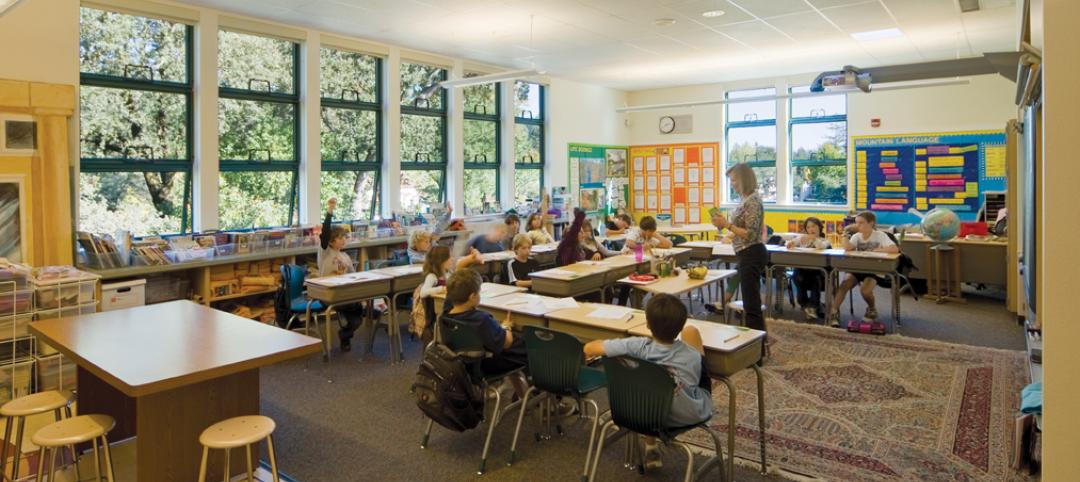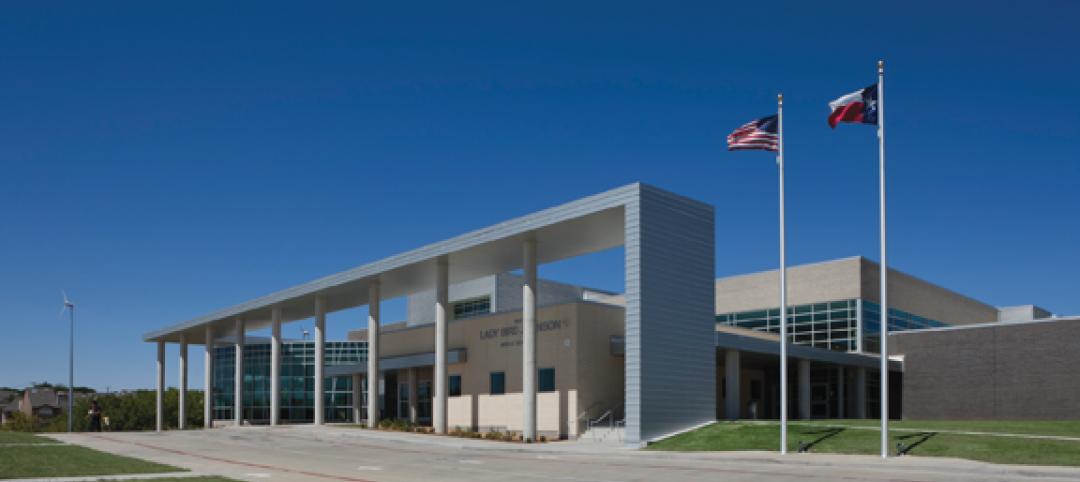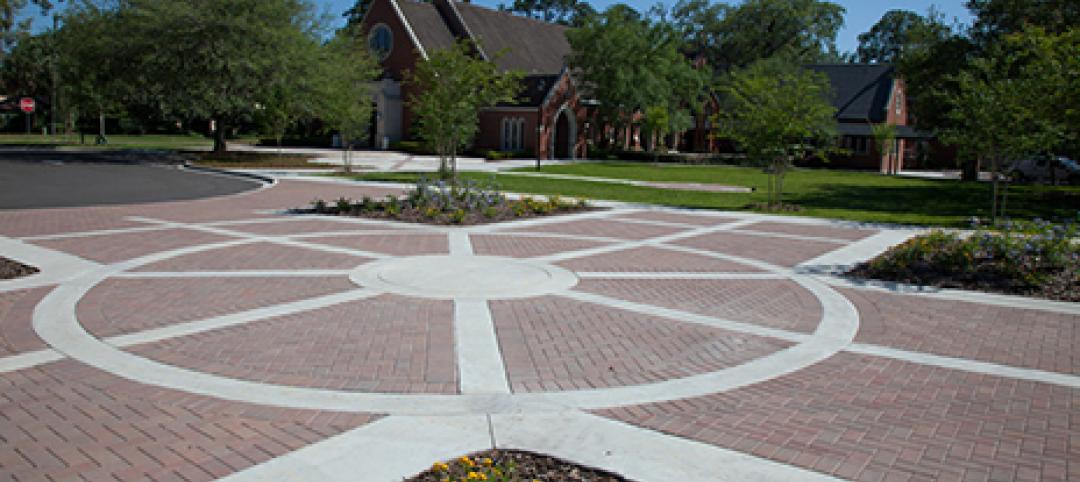 |
| The Haverford School campus was active during construction, so the soccer team had to practice within 10 feet of where the Upper School’s site fencing had been erected. |
Imagine this scenario: You're planning a $32.9 million project involving 112,000 sf of new construction and renovation work, and your job site is an active 32-acre junior-K-to-12 school campus bordered by well-heeled neighbors who are extremely concerned about construction noise and traffic.
Add to that the fact that within 30 days of groundbreaking, the general contractor gets canned. And one more thing: you have 15 months until the school bell rings.
This nightmare situation is exactly what Mike Rufo faced as construction manager for The Haverford School, a private school for 981 boys, on Philadelphia's Main Line. Rufo, owner of Rufo Contracting Inc. of Conshohocken, Pa., had worked with the school since 1992, when the institution launched a 15-year program to upgrade its campus. The project in question—construction of a new Upper School building and a new library totaling 87,000 sf and the renovation of Wilson Hall, the school's original 25,000-sf, 1903 classroom building—would be his last for the client, and one he would not forget.
 |
| The brick and glass Upper School (above) angles around to create a nook for the amphitheater. The 87,000 sf of new construction connects to the renovated Wilson Hall (below) to create the school’s new face. |
 |
In July 2007, with the original GC out, Rufo's most pressing concern was finding a qualified replacement—fast! Three firms looked at the project schedule and turned him down flat. With less than 400 days before the opening day, Rufo contracted with INTECH Construction of Philadelphia. The new GC took over a job site where demolition had started, the first foundations had been poured, the installation of sheeting, shoring, and soil nailing had begun, and steel was on order.
INTECH also inherited a project located in a residential neighborhood where on-site work was limited to the hours from 8 am to 6 pm, and never on Sunday. Deliveries could not be made using residential streets. Well-connected neighbors made sure these rules were enforced.
INTECH's first task was reassuring the remaining Building Team members—including a number of worried subcontractors and the equally nervous designer—that the project schedule could be met. Philadelphia-based MGA Partners Architects had worked with INTECH before, but they were concerned that the grueling timeline would force INTECH to value engineer the project and make compromising design modifications.
 |
| Numerous gathering and work spaces scattered throughout the project, including a columned seating area (top) and glass meeting pods (below), are designed to foster collaborative learning and social interaction. |
 |
MGA's design called for the combined Upper School building and Wilson Hall to become the new face of the campus. The new brick, glass, and steel facility would be connected to the renovated fieldstone and wood-framed Wilson Hall via a glass and limestone entrance pavilion. The sleek new Severinghaus Library would be tucked behind the 105-year-old Wilson Hall. Extensive glazing and curtain wall construction would open up the buildings to the outside, flooding the well-equipped and highly detailed classrooms, science labs, art studios, study nooks, and gathering spaces with daylight. The architects designed the project to achieve LEED Gold certification (still pending).
Rather than compromise the building's design integrity or sustainability efforts, INTECH instead reworked the schedule to break things down into more manageable chunks, called fragnets—for “fragmented networks of sub-projects”—to sequence the work more effectively. INTECH also asked MGA to provide an on-site architect so that decisions about any absolutely necessary modifications could be made quickly and in keeping with the original design intent. The cost of an on-site architect was not in the school's original budget, but the headmaster, Dr. Joseph Cox, realizing the value of having an MGA architect on site, pushed through approval of the additional expense.
The new sequencing scheme made all the difference. For example, the Building Team reworked the schedule so that interior work on the Upper School building could begin early. Fabrication of the project's cast stone detailing was more closely coordinated with the installation of the brick walls. The millwork and casework packages were reworked to comply with the integrity of the design but at a lower cost. Architectural metals and ornamental stairs were modified so that they could be installed faster, with no negative impact on the design intent.
Last-minute on-site changes like these can kill a project schedule, but the opposite was true at The Haverford School. The entire project was completed in August 2008—just in time for the start of the academic year.
“They did a great job on schedule,” said Building Team Awards judge Tracy Nicholas, VP, Alter Construction Management of Skokie, Ill. “There was great collaboration. Logistically, this was a difficult job with multiple departments, and they still did it all in 15 months.”
Related Stories
| Sep 7, 2012
The keys to success in the K-12 school market
When educators and school administrators describe their vision for new K-12 school buildings as ‘21st-century learning spaces,’ they’re not exaggerating. Many new schools are truly different in concept from their counterparts of only a few years ago.
| Jul 20, 2012
2012 Giants 300 Special Report
Ranking the leading firms in Architecture, Engineering, and Construction.
| Jul 20, 2012
K-12 Schools Report: ‘A lot of pent-up need,’ with optimism for ’13
The Giants 300 Top 25 AEC Firms in the K-12 Schools Sector.
| Jul 2, 2012
Plumosa School of the Arts earns LEED Gold
Education project dedicated to teaching sustainability in the classroom.
| Jun 1, 2012
New BD+C University Course on Insulated Metal Panels available
By completing this course, you earn 1.0 HSW/SD AIA Learning Units.
| May 29, 2012
Reconstruction Awards Entry Information
Download a PDF of the Entry Information at the bottom of this page.
| May 24, 2012
2012 Reconstruction Awards Entry Form
Download a PDF of the Entry Form at the bottom of this page.
| May 24, 2012
Stellar completes St. Mark’s Episcopal Church and Day School renovation and expansion
The project united the school campus and church campus including a 1,200-sf chapel expansion, a new 10,000-sf commons building, 7,400-sf of new covered walkways, and a drop-off pavilion.
| May 21, 2012
Winchester High School receives NuRoof system
Metal Roof Consultants attended a school board meeting and presented a sloped metal retrofit roof as an alternative to tearing off the existing roof and replacing it with another flat roof.














